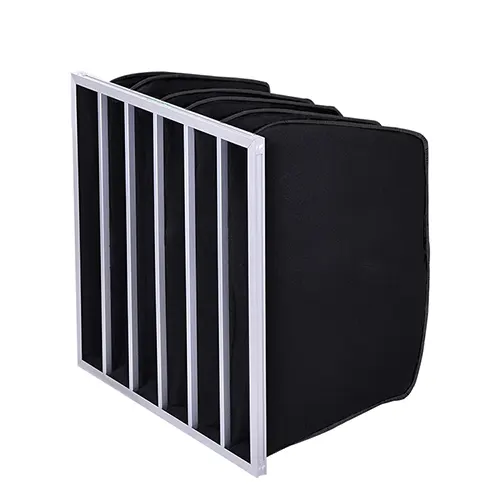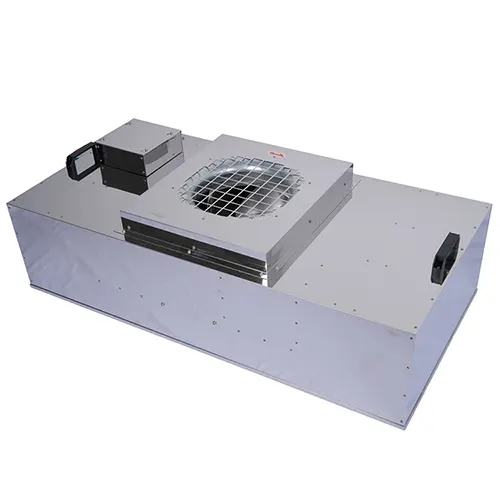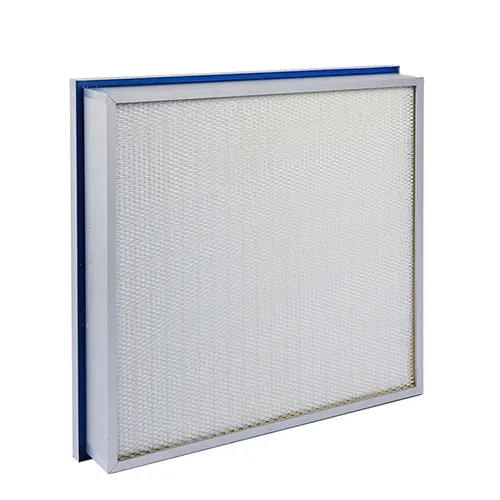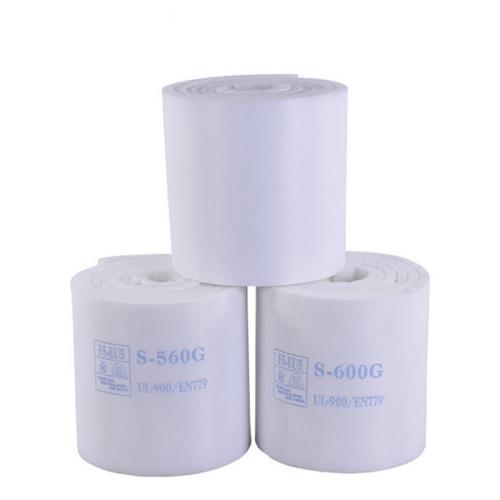Why Pocket Filters Are Essential for Powder Coating Operations
Air filtration is critical in maintaining a safe and efficient environment, especially in industrial settings. One specific filtration solution that’s particularly valuable in certain applications is the pocket filter. Pocket filters are designed to capture airborne particles effectively, making them a popular choice in powder coating operations.
In powder coating facilities, airborne powder and overspray particles can reduce indoor air quality, settle on equipment, and compromise the final product’s finish. Pocket filters, with their multi-pocket design, are highly effective at capturing these particles, making them essential for maintaining high air quality and protecting equipment in powder coating booths. In this blog, we’ll explore why pocket filters are a must-have in powder coating applications and how they enhance efficiency, safety, and product quality.
Understanding Pocket Filters in Powder Coating
Pocket filters, also known as bag filters, are made with a series of “pockets” that increase their surface area, enabling them to capture and hold a larger amount of dust and particles. This design makes them ideal for industrial applications like powder coating, where large volumes of fine powder are generated continuously.
Multi-Pocket Structure
The design of pocket filters allows them to capture particles across multiple layers. As air passes through each pocket, airborne particles are gradually filtered out, trapping fine powders and contaminants before they reach sensitive equipment or the workspace.
Suited for Powder Coating Particles
Powder coating involves applying fine powder to surfaces, which is then cured to form a durable finish. However, the powder particles used in this process are extremely fine and can easily become airborne. Pocket filters are designed to handle these fine particles, which are often too small for standard filters to capture effectively.
Durability and Large Surface Area
Pocket filters are made from robust materials that can withstand the abrasive nature of powder coating particles. Their multi-pocket design offers an extensive filtration surface within a compact space, enabling them to capture more particles and reduce the frequency of filter replacements, which is especially important in high-demand environments.
Benefits of Pocket Filters in Powder Coating Operations
Enhanced Air Quality
Powder coating releases fine particles that can degrade indoor air quality and pose health risks to workers. Pocket filters are designed to capture these airborne particles, creating a cleaner and safer workspace. By capturing overspray and particulate matter, pocket filters reduce the amount of dust in the air, ensuring that the facility meets indoor air quality standards and provides a safe working environment.
Protection for Equipment and Product Quality
Without proper filtration, airborne powder particles can settle on coating equipment and cause wear over time. Frequent cleaning becomes necessary to maintain the equipment, which can lead to increased maintenance costs and downtime. Dust particles can also settle on products in the coating booth, compromising the quality of the finish. Pocket filters prevent this by capturing particles before they settle, helping to ensure that coating equipment stays clean and that the final product achieves a smooth, uniform finish.
Reduced Maintenance Costs
By capturing the bulk of airborne particles, pocket filters reduce the strain on the HVAC system, which minimizes the need for frequent maintenance. Pocket filters act as a protective barrier, preventing dust buildup within the system and extending the life of other air filtration components. This reduction in maintenance needs also translates to cost savings, as HVAC systems operate more efficiently and with fewer interruptions.
Energy Efficiency
Pocket filters are designed to capture particles efficiently without restricting airflow. This low resistance to airflow means that HVAC systems don’t need to work as hard to circulate air, which helps reduce energy consumption. The energy savings provided by pocket filters not only benefit operational costs but also contribute to a lower environmental impact, making them an energy-efficient choice for facilities focused on sustainability.
Key Features of Pocket Filters for Powder Coating Applications
Improving indoor air quality starts with recognizing the sources of pollution and understanding how they affect health. Here are some of the most common contributors to poor IAQ in office environments:
High Dust-Holding Capacity
Pocket filters are built with a large surface area that allows them to capture and hold substantial amounts of dust and particles. This high dust-holding capacity is crucial in powder coating environments, where dust and powder particles are generated continuously.
Durability
Powder coating booths can be harsh environments, with abrasive particles that can wear down weaker filters. Pocket filters are constructed from durable materials that withstand these conditions, making them ideal for long-term use in industrial settings.
Efficient Filtration Layers
Pocket filters are made with multiple layers of filtration media that allow them to trap particles of various sizes. This multi-layered filtration doesn’t compromise airflow, which means that the HVAC system can operate efficiently while maintaining high filtration effectiveness.
Installation and Maintenance Tips for Pocket Filters in Powder Coating Booths
Proper installation and regular maintenance are essential to ensure pocket filters work effectively and last as long as possible. Here are some best practices to follow:
Proper Installation
When installing pocket filters, it’s crucial to ensure they are positioned correctly within the HVAC system. Make sure the pockets are oriented in the direction of the airflow, and that each filter is secured firmly to prevent any air from bypassing the filter. Proper installation not only maximizes the filter’s effectiveness but also extends its lifespan.
Regular Inspections
Pocket filters should be inspected periodically for dust buildup, wear, and any signs of damage. Regular inspections allow for early detection of potential issues, which can prevent major problems and ensure the filter continues to operate effectively. This is especially important in high-demand environments where dust accumulation is rapid.
Scheduled Replacements
Pocket filters in powder coating operations should be replaced at intervals recommended by the manufacturer, typically every 3-6 months depending on usage levels. If you notice signs of reduced airflow, uneven coating finishes, or visible dirt on the filters, it may be time for a replacement. Timely replacements help maintain high air quality and efficient system performance.
Common Mistakes to Avoid When Using Pocket Filters in Powder Coating Operations
Failing to Replace Filters on Time
Overused filters become clogged and ineffective, reducing air quality and increasing strain on the HVAC system. Make sure to replace filters regularly to prevent these issues.
Installing Incompatible Filter Types or Sizes
Using filters that aren’t designed for powder coating environments can result in insufficient filtration. Always choose filters suited for fine particles and designed specifically for powder coating applications.
Neglecting Regular Maintenance and Inspections
Without routine checks, dust buildup and filter wear can go unnoticed, leading to reduced filtration efficiency. Regular maintenance is crucial to catching and resolving these issues early.
Conclusion
Pocket filters are a critical component in powder coating operations, offering efficient particle capture, enhanced air quality, and protection for equipment and product quality.
Their large dust-holding capacity, durability, and energy efficiency make them ideal for handling the demands of a powder coating facility. With proper installation, regular maintenance, and timely replacements, pocket filters help create a cleaner, safer, and more efficient workspace.





